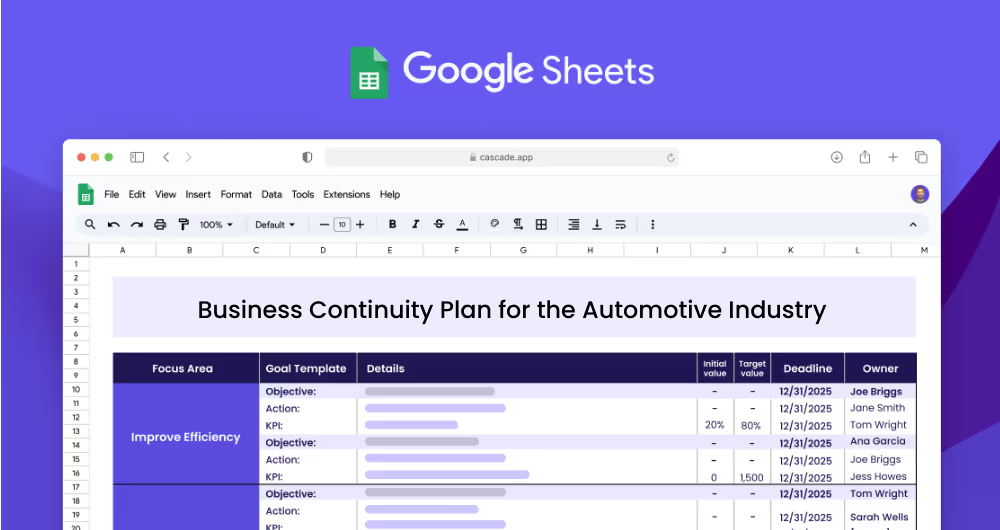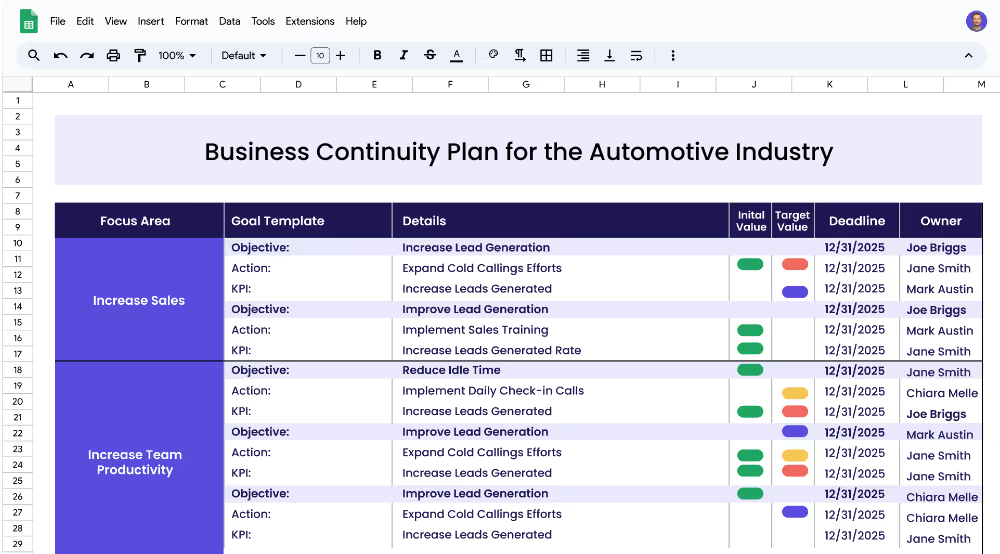A business continuity plan for the automotive industry is a comprehensive plan outlining how an automotive organization should respond to a potential crisis. The plan outlines key areas of focus, objectives, and goals to help ensure the continuity of production, supply chains, and customer services. It also provides guidance on how to handle any potential disruption in the event of a crisis.
Each focus area has its own objectives, projects, and KPIs to ensure that the strategy is comprehensive and effective.
This template is designed to help automotive industry companies, including manufacturers, suppliers, and dealerships, develop their business continuity plans. The template provides a comprehensive framework for developing a plan that is tailored to the specific needs of each organization.
Focus areas are the main areas of focus for your business continuity plan. Examples of focus areas for the automotive industry include ensuring business continuity, ensuring financial resilience, and strengthening communication. When developing your plan, it is important to define these focus areas and the objectives that fall under them.
Objectives are the goals that you want to achieve in each focus area. For example, within the focus area of ensuring business continuity, objectives could include identifying potential risks and developing response strategies. Within the focus area of ensuring financial resilience, objectives could include developing a financial contingency plan and assessing liquidity risk.
Key performance indicators (KPIs) are measurable targets that can help you track the progress of your objectives. When setting KPIs, it is important to set realistic and achievable targets. An example of a KPI for the focus area of Ensure Business Continuity could be: Identify risks with impact > 10.
Projects (actions) are the activities that you need to implement in order to achieve your KPIs. For each project, it is important to define the actions that need to be completed, the resources required, the timeline, and the responsible parties. Once the projects are implemented, you can track their progress to ensure that they are on track to achieving the KPIs. An example of a project related to Ensure Business Continuity could be: Conduct internal risk assessment.
When you're ready to move beyond spreadsheets and see real progress, Cascade Strategy Execution Software provides a centralized, scalable platform designed to streamline your strategy execution. Unlike traditional methods that can be cumbersome and slow, Cascade offers real-time updates, automated reporting, and collaborative tools to enhance the performance of your business continuity plan. Quickly adjust and align your strategies as situations evolve, ensuring your automotive business stays on track. Sign-up for free or book a demo today and see how we can turbocharge your strategy execution.


